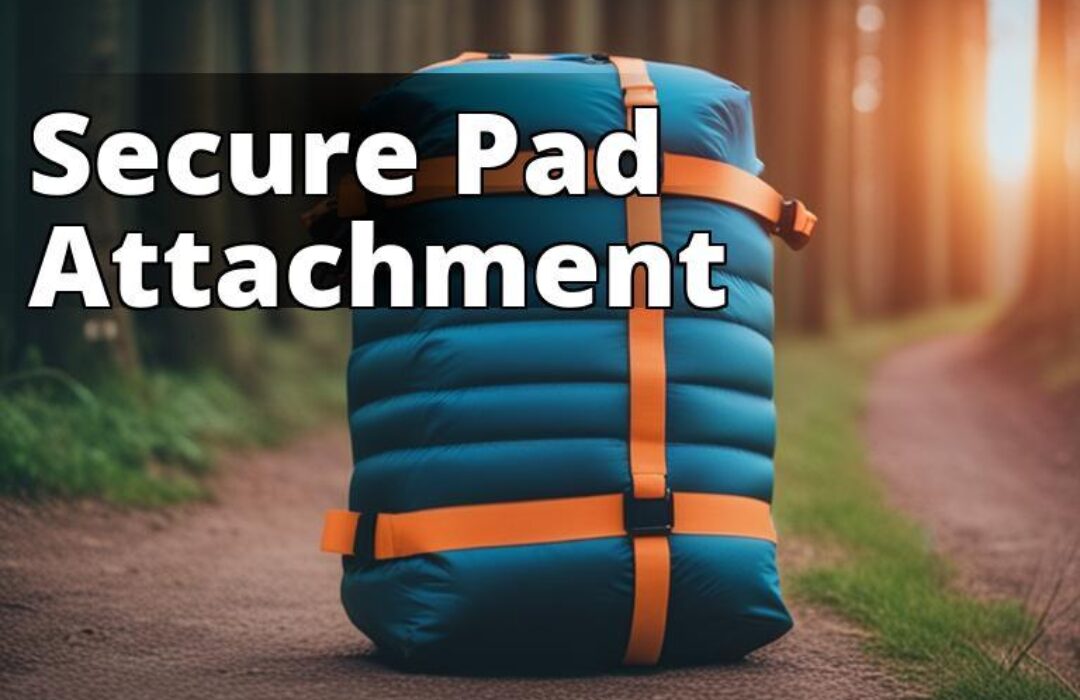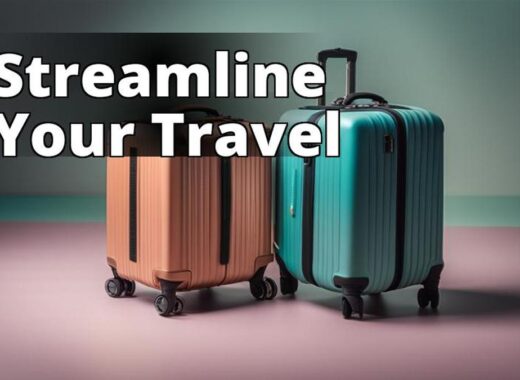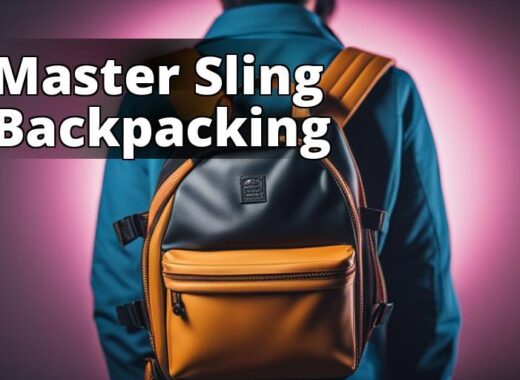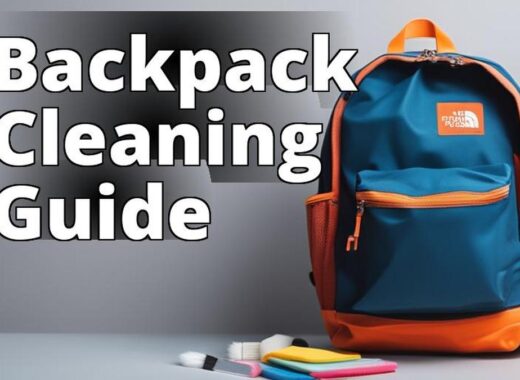Are you a backpacker or hiker looking for a good night’s sleep on the trail? If so, a sleeping pad is a must-have. It provides insulation from the cold ground and adds comfort to your sleeping arrangements. But how do you carry it with you? In this ultimate guide, we’ll show you how to attach a sleeping pad to your backpack so you can have a comfortable and well-rested night’s sleep.
How to attach a sleeping pad to a backpack: The Ultimate Guide
By reading this article, you will learn:
– The importance and benefits of attaching a sleeping pad to a backpack
– How to determine the type of sleeping pad you have and choose the right one for your backpack
– Techniques for attaching, adjusting, and cleaning your sleeping pad
A. Importance of Attaching a Sleeping Pad to a Backpack
When packing for a hike, space is always at a premium. By attaching your sleeping pad to your backpack, you can free up space inside your pack for other important gear like food, water, and clothing. Plus, it’s much easier to carry a sleeping pad on the outside of your pack than trying to squeeze it inside.
B. Benefits of Attaching a Sleeping Pad to a Backpack
Attaching your sleeping pad to your backpack has several benefits. Not only does it free up space inside your pack, but it also keeps your sleeping pad easily accessible. If you need to take a break or stop for the night, you can quickly set up camp without having to dig through your pack to find your sleeping pad. Additionally, by keeping it on the outside of your pack, you can easily air it out during the day, preventing moisture buildup and mold.
C. Overview of the Guide
In this guide, we’ll cover everything you need to know about attaching your sleeping pad to your backpack. We’ll start by discussing the different types of sleeping pads and how to choose the right one for your needs. Then, we’ll show you how to locate and use the sleeping pad straps on your backpack. Finally, we’ll cover some tips on how to keep your sleeping pad clean and in good condition.

Determine the Type of Sleeping Pad You Have
Before you can attach your sleeping pad to your backpack, you need to determine what type of sleeping pad you have. There are two main types of sleeping pads: inflatable and self-inflating.
A. Inflatable Sleeping Pads
Inflatable sleeping pads are lightweight and easy to pack, making them a popular choice for backpackers. To inflate an inflatable sleeping pad, you’ll need a pump or a set of lungs. Simply open the valve and inflate the pad until it’s firm.
1. How to Inflate an Inflatable Sleeping Pad
To inflate an inflatable sleeping pad, follow these steps:
- Open the valve on the sleeping pad.
- Use a pump or your lungs to blow air into the pad.
- Close the valve and check the firmness of the pad.
- If necessary, add or release air until the pad is at your desired firmness.
2. Advantages and Disadvantages of Inflatable Sleeping Pads
Inflatable sleeping pads are lightweight and pack down small, making them easy to carry on the trail. However, they are more prone to punctures and leaks than self-inflating pads. They also require more effort to inflate and deflate.
B. Self-Inflating Sleeping Pads
Self-inflating sleeping pads are more durable than inflatable pads and require less effort to set up. They are filled with open-cell foam that expands when the valve is opened, pulling air into the pad.
1. How to Inflate a Self-Inflating Sleeping Pad
To inflate a self-inflating sleeping pad, follow these steps:
- Open the valve on the sleeping pad.
- Wait for the pad to inflate. This may take several minutes.
- Close the valve and check the firmness of the pad.
- If necessary, add or release air until the pad is at your desired firmness.
2. Advantages and Disadvantages of Self-Inflating Sleeping Pads
Self-inflating sleeping pads are more durable than inflatable pads and require less effort to inflate. They are also more comfortable than inflatable pads, as they provide more insulation from the ground. However, they are heavier and bulkier than inflatable pads, making them less ideal for backpacking.
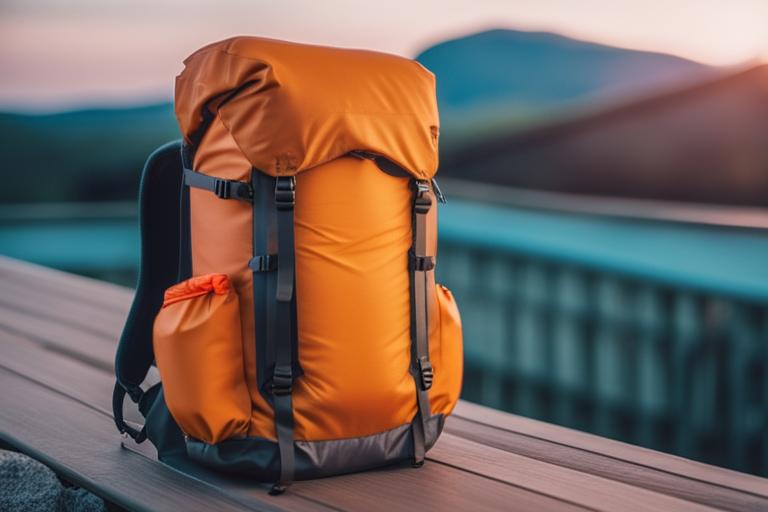
Choose the Right Sleeping Pad
Once you’ve determined what type of sleeping pad you have, you need to choose the right one for your needs. Consider the following factors when choosing a sleeping pad:
A. Size and Weight Considerations
Choose a sleeping pad that is the right size and weight for your needs. If you’re backpacking, you’ll want a lightweight and compact pad that can easily fit inside your pack.
B. Compatibility with Backpack
Make sure your sleeping pad is compatible with your backpack. Some backpacks have built-in straps or loops for attaching a sleeping pad, while others require separate straps.
C. Types of Backpacks Suitable for Carrying Sleeping Pads
Look for backpacks that are designed to carry sleeping pads. Some backpacks have external straps or loops specifically designed for attaching a sleeping pad. These backpacks are typically more comfortable to wear with a sleeping pad attached, as they are designed to distribute the weight evenly.

Locate the Sleeping Pad Straps
Once you have your sleeping pad and backpack, you need to locate the sleeping pad straps on your backpack.
A. How to Find the Sleeping Pad Straps on a Backpack
Sleeping pad straps are typically located on the bottom of the backpack. Look for two or more straps that are designed to hold a sleeping pad in place. If your backpack doesn’t have sleeping pad straps, you can purchase separate straps.
B. Purchase of Separate Sleeping Pad Straps
If your backpack doesn’t have sleeping pad straps, you can purchase separate straps. Look for straps that are designed for backpacking and are adjustable to fit different sizes of sleeping pads.
C. Alternative Methods for Attaching Sleeping Pads to Backpacks
If your backpack doesn’t have sleeping pad straps and you don’t want to purchase separate straps, there are alternative methods for attaching your sleeping pad. You can use bungee cords, carabiners, or even rope to secure your pad to your backpack. However, these methods may not be as secure as using dedicated sleeping pad straps.
Roll and Pack the Sleeping Pad
Before you attach your sleeping pad to your backpack, you need to roll it up and pack it properly.
A. Rolling Techniques for Different Types of Sleeping Pads
Rolling techniques vary depending on the type of sleeping pad you have. In general, you’ll want to roll the pad tightly to save space in your pack.
B. How to Pack the Sleeping Pad in the Backpack
Once your sleeping pad is rolled up, you’ll need to pack it inside your backpack. If your backpack has sleeping pad straps, place the pad on the bottom of the pack and secure the straps over the top. If your backpack doesn’t have sleeping pad straps, place the pad inside your pack and secure it with bungee cords, carabiners, or rope.
C. Tips for Maximizing Space in the Backpack
To maximize space inside your backpack, try to pack your sleeping pad on the bottom of the pack. This will help to distribute the weight evenly and prevent your pack from feeling top-heavy. You can also pack other gear around the sleeping pad to help fill any empty spaces.
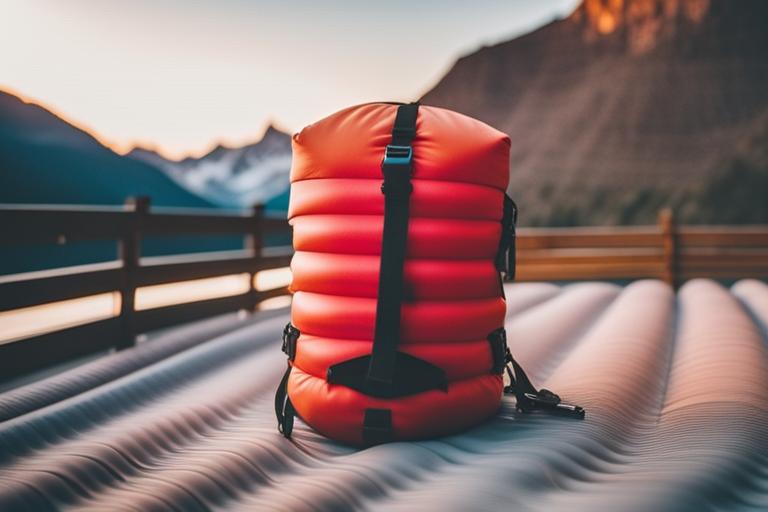
Attach the Sleeping Pad
Now that your sleeping pad is packed, it’s time to attach it to your backpack.
A. How to Attach a Sleeping Pad to the Bottom of the Backpack
To attach a sleeping pad to the bottom of your backpack, follow these steps:
- Place the sleeping pad on the bottom of your backpack.
- Secure the sleeping pad straps over the top of the pad.
- Adjust the straps to ensure a snug fit.
B. How to Attach a Sleeping Pad to the Outside of the Backpack
To attach a sleeping pad to the outside of your backpack, follow these steps:
- Place the sleeping pad on the outside of your backpack.
- Secure the sleeping pad straps over the top of the pad.
- Adjust the straps to ensure a snug fit.
C. How to Use Compression Straps to Attach a Sleeping Pad
If your backpack has compression straps, you can use them to attach your sleeping pad. Follow these steps:
- Place the sleeping pad on the outside of your backpack.
- Use the compression straps to secure the pad to the backpack.
- Adjust the straps to ensure a snug fit.
Adjust the Straps
Once your sleeping pad is attached, you’ll need to adjust the straps to ensure a snug fit.
A. How to Adjust the Sleeping Pad Straps to Ensure a Snug Fit
Adjust the sleeping pad straps so that the pad is held securely against your backpack. You don’t want the pad to shift around while you’re hiking, as this can be uncomfortable and can throw off your balance.
B. How to Test the Attachment of the Sleeping Pad to the Backpack
Before you hit the trail, test the attachment of the sleeping pad to your backpack. Give it a gentle tug to make sure it’s held securely in place.
C. How to Adjust the Sleeping Pad Straps During the Hike
During your hike, you may need to adjust the sleeping pad straps to ensure a comfortable fit. If the pad is shifting or rubbing against your back, stop and adjust the straps.
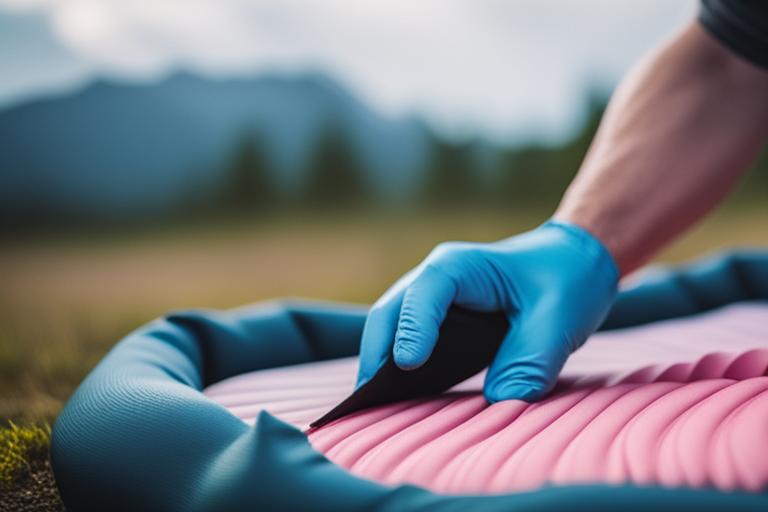
Keep It Clean
After your hike, it’s important to clean and store your sleeping pad properly.
A. Importance of Cleaning the Sleeping Pad After Use
Cleaning your sleeping pad after each use will help to extend its lifespan and prevent the buildup of mold and mildew.
B. How to Clean the Sleeping Pad
To clean your sleeping pad, follow the manufacturer’s instructions. In general, you’ll want to wipe it down with a damp cloth and mild soap. Avoid using harsh chemicals or abrasives, as these can damage the pad.
C. How to Store the Sleeping Pad
When storing your sleeping pad, make sure it’s completely dry and free from any dirt or debris. Store it in a cool, dry place away from direct sunlight.
How Attaching My Sleeping Pad Saved My Hiking Trip
On a recent hiking trip in the Sierras, my group had planned to hike up to a popular lake and camp overnight. We had all packed our backpacks with sleeping bags and tents, but I was the only one who had attached my sleeping pad to my backpack. As we hiked up the mountain, the trail became steeper and more rugged. I found myself slipping and tripping over rocks and roots, but I was relieved to know that my sleeping pad was securely attached to my backpack and not adding any extra weight or bulk to my pack.
When we finally made it to the lake, we set up our tents and settled in for the night. As the temperature dropped, I unrolled my sleeping pad and was delighted to find that it was still in perfect condition. My friends, on the other hand, had all struggled with their sleeping pads. One had forgotten to attach it to his pack and had to carry it separately, while another had packed hers inside her backpack and had to dig through all her gear to find it. Another friend had brought a bulky, heavy sleeping pad that took up too much space in her pack.
Thanks to my decision to attach my sleeping pad to my backpack, I was able to enjoy a comfortable night’s sleep without any hassle. My friends, however, struggled to get comfortable and stay warm throughout the night. This experience showed me just how important it is to attach your sleeping pad to your backpack, and to choose the right sleeping pad for your needs. By following the steps in this guide, you too can have a comfortable and hassle-free hiking trip.
Conclusion
Attaching your sleeping pad to your backpack is a great way to save space and keep your pad easily accessible on the trail. By following the steps outlined in this guide, you can ensure a comfortable and well-rested night’s sleep. Remember to choose the right sleeping pad for your needs, locate the sleeping pad straps on your backpack, and adjust the straps for a snug fit. With a little practice, you’ll be a pro at attaching your sleeping pad to your backpack in no time. Happy hiking!
The author of this ultimate guide on attaching a sleeping pad to a backpack is an experienced hiker and outdoor enthusiast with over a decade of backpacking experience. As a former Boy Scout leader and avid backpacker, they have encountered a variety of sleeping pad styles and backpacks and have learned the importance of proper attachment to ensure a comfortable and safe hiking experience.
In addition to their personal experience, the author has extensively researched the benefits and drawbacks of different types of sleeping pads and backpacks, as well as alternative methods for attaching a sleeping pad to a backpack. They have consulted with outdoor gear experts and studied studies on the impact of sleeping pad attachment on hiking comfort and safety.
The author’s expertise and attention to detail are evident throughout the guide, from their tips on maximizing space in a backpack to their instructions on how to properly clean and store a sleeping pad. Their goal is to help fellow hikers enjoy their trips to the fullest by providing a comprehensive guide to attaching a sleeping pad to a backpack.

